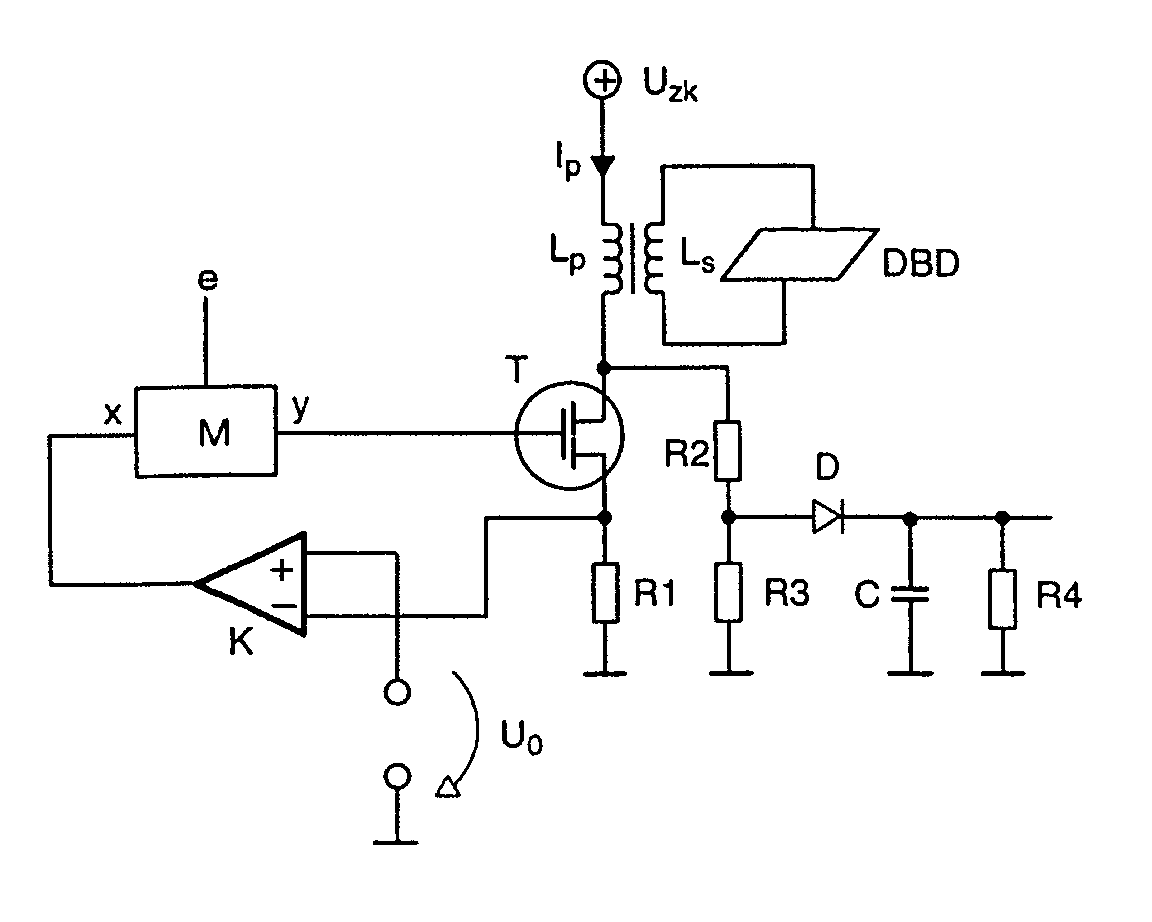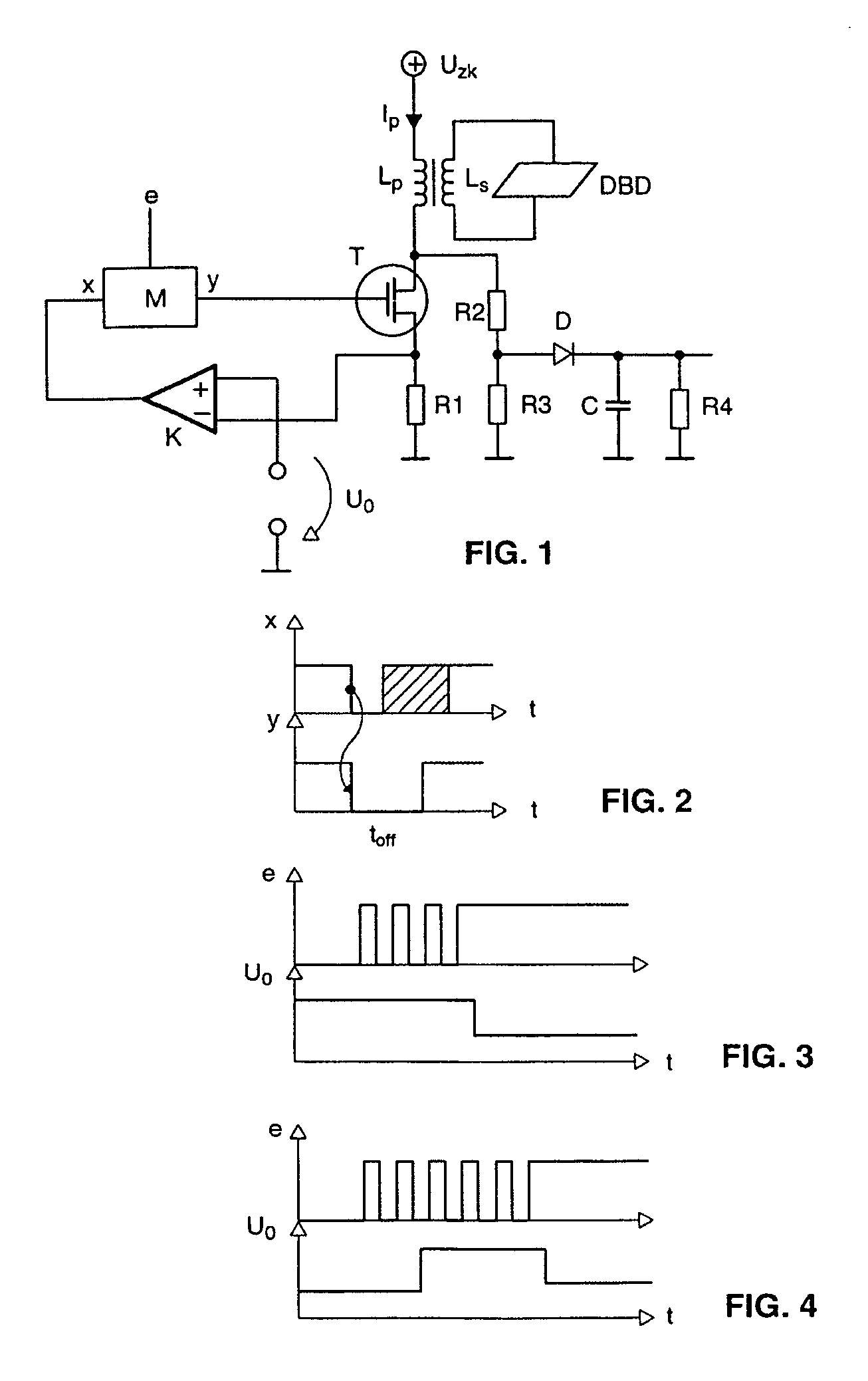Operating circuit for a dielectrically impeded discharge lamp having an overvoltage protection circuit
a dielectrically impeded discharge lamp and overvoltage protection circuit technology, which is applied in the field of circuits and methods for operating dielectrically impeded discharge lamps, can solve the problems of insufficient monitoring of the voltage across the switching transistor in cases relevant in practice, destruction of the switching transistor, and the overvoltage protection circuit mentioned does not respond quickly enough, etc., to achieve the effect of improving the properties
- Summary
- Abstract
- Description
- Claims
- Application Information
AI Technical Summary
Benefits of technology
Problems solved by technology
Method used
Image
Examples
Embodiment Construction
[0023]In FIG. 1, a dielectrically impeded discharge lamp is given the reference DBD and is connected in a secondary circuit to a secondary winding Ls of a transformer. The transformer has a primary winding Lp which has power supplied to it from a voltage source Uzk, the intermediate circuit voltage of a generally known and conventional converter. This induces a flow of current, illustrated by the arrow and the symbol Ip, through the primary winding Lp which then flows to ground via a MOSFET T, connected in series with the primary winding Lp, and a shunt resistor R1. The gate input of the MOSFET switching transistor T which is shown on the left-hand side, is driven by a monoflop M having an input x and an output y and an enable input e. The input x of the monoflop M is in turn driven by a comparator K, at whose positive input a reference voltage U0 is connected to ground, and at whose negative input the voltage between the source connection of the switching transistor T and the shunt...
PUM
 Login to View More
Login to View More Abstract
Description
Claims
Application Information
 Login to View More
Login to View More - R&D
- Intellectual Property
- Life Sciences
- Materials
- Tech Scout
- Unparalleled Data Quality
- Higher Quality Content
- 60% Fewer Hallucinations
Browse by: Latest US Patents, China's latest patents, Technical Efficacy Thesaurus, Application Domain, Technology Topic, Popular Technical Reports.
© 2025 PatSnap. All rights reserved.Legal|Privacy policy|Modern Slavery Act Transparency Statement|Sitemap|About US| Contact US: help@patsnap.com


